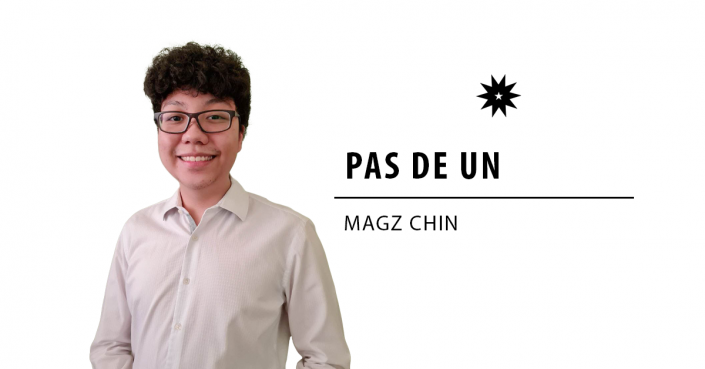
I never saw the arts as something worthwhile.
While it may seem hard to believe that I’d say such a thing, this was actually my presumption of the arts for most of my life. The many art disciplines didn’t really stand out to me because I merely saw them as academic requirements.
My former school also didn’t give much importance to them. I was stuck in a system that only prized those who excelled in technical subjects. Most of the attention—if not all—went to sharpening our knowledge on math and science. Everytime I engaged in the arts, I was only motivated by the high grades that would come in return. Thus, I didn’t really have a proper understanding of the context behind what I was supposed to be doing.
It also didn’t help that my classes in some of my art, music, and dance subjects were free periods. I’d usually cram an assignment for another subject or talk to my classmates for hours on end. True enough, equations, facts, and logic are crucial in everyday life. But I couldn’t help feeling that the arts were just another academic chore, with teachers unconsciously hinting it’s a field not worth our full commitment.
Although there was one kind of art that I was extremely fond of: literature. When I was tasked to write stories, my imagination went wild. I enjoyed writing because every time I did so, it felt like the characters I created leapt out of the pages. When I analyzed stories, it opened my eyes to topics I never knew the literary arts could explore—issues regarding politics, gender discrimination, classism, disability, and many more weaved their way into these narratives.
Creating worlds and reading stories of people from profound backgrounds seemed like a dream. I wanted to be like the authors who made magic just by writing a few pages. I aimed to discover where my ideas would take me; so I decided to take creative writing as my degree in college.
But I wasn’t met with the most favorable responses.
I still remember the piercing looks my teachers gave me when I told them I’d be venturing into the humanities. One looked me straight in the eye. As the room echoed in silence, he asked, “Sure ka?” Though it was a simple two-word inquiry, their delivery was deadpan—a frigid manifestation of the years’ worth of warnings our education system had been telling us if we strayed into the arts.
Nonetheless, I ventured on. And luckily, my appreciation for other disciplines in art grew over time. I witnessed the narratives of our indigenous people in folk dances; listened to kundimans that redefined my presumptions on love and admiration; was commanded by theater to rethink current political systems and how they affect our country. This overwhelming exposure to the arts gave birth to my personal mission: to discover and tell narratives the world has never seen before.
I integrated this vocation while creating the Menagerie section’s lineup for The LaSallian’s February issue. Alas, many roadblocks almost prevented us from fully realizing that goal. Some of the topics were so specific that interviewees declined due to its obscurity. For others, the topic was difficult to execute because the artform was essentially dying. What left a foul taste in my mouth, however, was when experts requested payment to have an interview—making discourses about art more inaccessible.
But they shouldn’t be blamed for this gatekeeping. Rather, these are signs that tell how much our government has neglected the protection and preservation of our culture and arts. If people still see the arts as a worthless field, if many are unable to understand the painstaking process that goes into creating a certain craft, then part of our identity would ultimately be erased. What’s more frightening is that this systemic neglect has seeped its way into education—with my experiences being one of the many instances.
Fortunately, there is at least a faint glimmer at the end of this tunnel. Last January, the children’s television block Knowledge Channel teamed up with the Cultural Center of the Philippines to make the latter’s documented performances nationally available. While it is unknown if the program is going to be permanent, this is still a progressive step toward making Filipino art accessible.
Students will be exposed to these artforms on a regular basis. More importantly, it can be a perfect avenue to reintroduce the more unknown parts of our rich heritage, especially since going to theaters and other art spaces are currently restricted due to the government’s current lockdown restrictions. It can jumpstart a myriad of proposals in making art more prominent in all forms of education, eliminating this culture that merely sees the arts as a worthless field.
If our government innovates ways on how the arts can be accessible for all, people—especially children—would foster a more genuine appreciation and curiosity in the field. Above all, the protection of the arts is a must. Upholding the legacies of our people through safeguarding endangered and indigenous artforms would surely take the local arts scene to greater heights. This future seems exhilarating, especially after a presidential candidate recently vowed to restructure the current support system for the arts to give it the platform it truly deserves.
This year’s National Arts Month serves as a reminder that the arts are still alive. Through proper protection and preservation, we get to discover more of what the country has to offer—serving both as a portal to the past and a gateway in dictating our future as a nation. Perhaps my teachers’ caveats for journeying into the arts were warnings—siren calls, if you will. But, how much do we actually know of ourselves if we don’t venture beyond the system’s boundaries?
